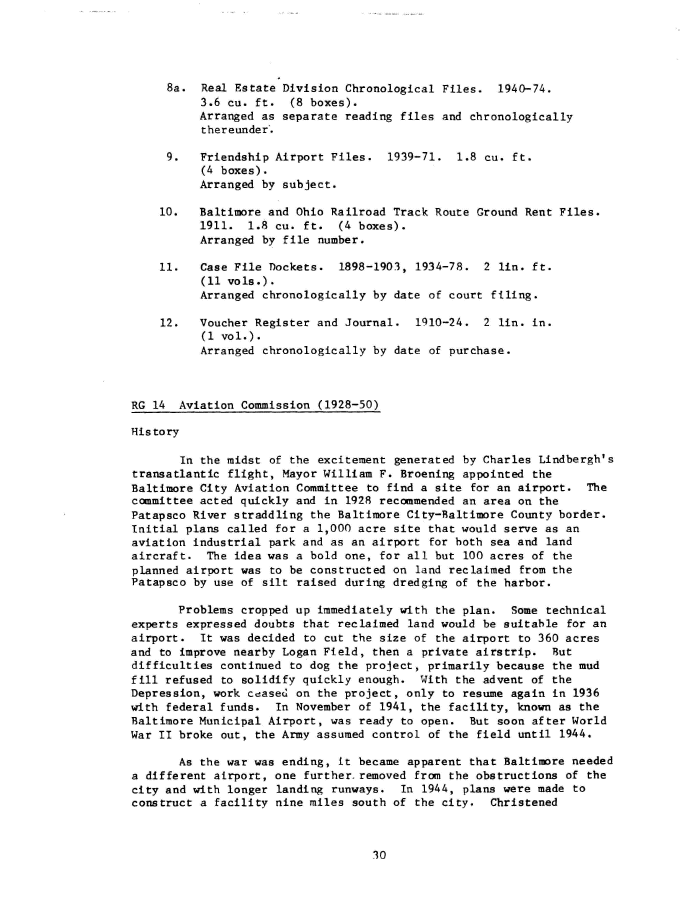|
8a. Real Estate Division Chronological Files. 1940-74.
3.6 cu. ft. (8 boxes).
Arranged as separate reading files and chronologically
thereunder.
9. Friendship Airport Files. 1939-71. 1.8 cu. ft.
(4 boxes).
Arranged by subject.
10. Baltimore and Ohio Railroad Track Route Ground Rent Files.
1911. 1.8 cu. ft. (4 boxes).
Arranged by file number.
11. Case File Dockets. 1898-1903, 1934-78. 2 lin. ft.
(11 vols.).
Arranged chronologically by date of court filing.
12. Voucher Register and Journal. 1910-24. 2 lin. in.
(1 vol.).
Arranged chronologically by date of purchase.
RG 14 Aviation Commission (1928-50)
History
In the midst of the excitement generated by Charles Lindbergh's
transatlantic flight, Mayor William F. Broening appointed the
Baltimore City Aviation Committee to find a site for an airport. The
committee acted quickly and in 1928 recommended an area on the
Patapsco River straddling the Baltimore City-Baltimore County border.
Initial plans called for a 1,000 acre site that would serve as an
aviation industrial park and as an airport for both sea and land
aircraft. The idea was a bold one, for all but 100 acres of the
planned airport was to be constructed on land reclaimed from the
Patapsco by use of silt raised during dredging of the harbor.
Problems cropped up immediately with the plan. Some technical
experts expressed doubts that reclaimed land would be suitable for an
airport. It was decided to cut the size of the airport to 360 acres
and to improve nearby Logan Field, then a private airstrip. But
difficulties continued to dog the project, primarily because the mud
fill refused to solidify quickly enough. With the advent of the
Depression, work ceased on the project, only to resume again in 1936
with federal funds. In November of 1941, the facility, known as the
Baltimore Municipal Airport, was ready to open. But soon after World
War II broke out, the Army assumed control of the field until 1944,
As the war was ending, it became apparent that Baltimore needed
a different airport, one further.removed from the obstructions of the
city and with longer landing runways. In 1944, plans were made to
construct a facility nine miles south of the city. Christened
30
|

